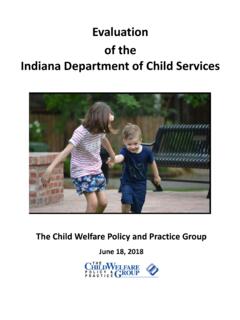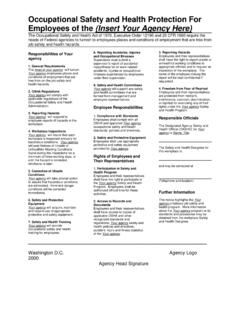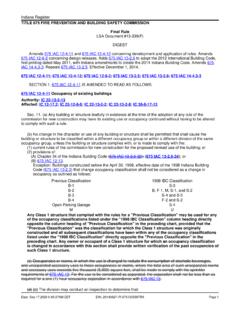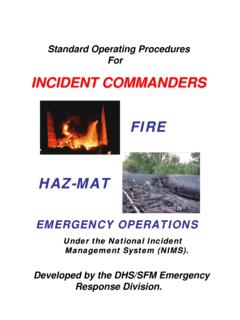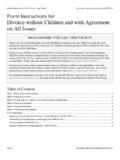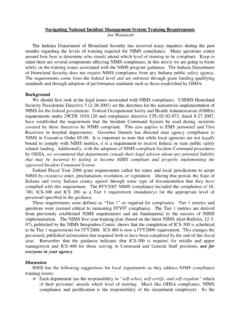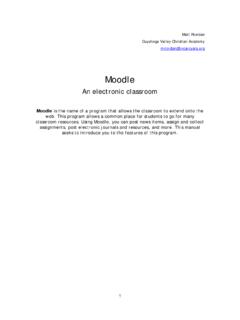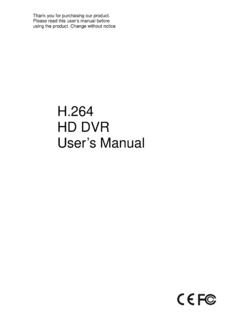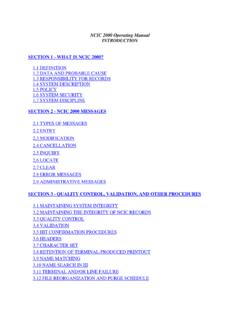Transcription of Criminal Investigation Manual
1 Criminal Investigation Manual Introduction This Manual will supplement the instruction given in the Criminal Investigation Course presented to the Indiana Law Enforcement basic trainee attending the fifteen week Tier I. course in Plainfield. This training can be used for the different types of individuals that you may have the opportunity to interview whether it be persons who may have information, the complainant, a witness, a suspect or the perpetrator. Contents Neighborhood Canvassing .. 3. The purpose of the inquiry .. 3. Witnesses - seeking out .. 3. Perpetrator(s) .. 3. Security Cameras-attempt to locate and secure video .. 3. Persons To Canvass .. 4. Canvass Considerations .. 5. Note Taking .. 5. Interview Techniques .. 6. Hypnotic Interviews and 6. Supreme Court Case (Burns vs Reed, 500 (1991).)
2 7. The interview Structure .. 7. Beginning .. 8. Middle .. 8. Ending .. 9. Post Interview 9. Other Types of Interview Tools .. 9. Cognitive Interview .. 10. Morgan Technique .. 10. Statement 11. Recordings of a truthful person and a deceitful person .. 12. Truthful Person .. 12. Deceptive Person .. 12. A few years ago the Indiana Law Enforcement Academy conducted a survey of Indiana law enforcement departments, their chiefs, sheriffs, directors and the men and women who keep our streets safe. This survey was an inquiry into what these law enforcement officers considered additional needed training during the twenty-first century in conjunction with the Criminal Investigation Course. There were two issues that were named: Neighborhood Canvassing and Note Taking. Neighborhood Canvassing Neighborhood Canvassing is considered an intensive inquiry.
3 The purpose of the inquiry Witnesses - seeking out Who may know they have information o Those law abiding citizens who have information about a crime or occurrence and will freely and willingly give what they know about the occurrence. Who may not know they have information o Until being questioned by law enforcement and their memory is jogged. Perpetrator(s) - attempting to identify o Safety is an important issue in the inquiry as you may have the opportunity to unknowingly talk with the perpetrator o This can be a shock to their security as they see you approach their doors. They may think they have been identified and take drastic measures to assure their escape. o Use your safety approach to every door you knock on o You may during a conversation get an admission or in some cases a confession.
4 Just realize that an admission is not a confession, but you may be able to put the person interviewed in the area and at the time of the commission of your inquiry Security Cameras-attempt to locate and secure video o We live in an age of technology that can be of assistance to the investigating officer o Seek out security video cameras in the area of your Investigation o City or town video cameras o Business video cameras o Home owner video cameras This intensive inquiry of a neighborhood canvassing must be conducted as soon as possible in order to obtain information while it may still be fresh in a witness's recollection. Persons To Canvass There are, surely, additional persons who may have information about a crime or occurrence you are investigating, however, these are suggested to give you an idea of some sources of information.
5 O Neighbors- while carrying out this inquiry, don't just limit yourself to those houses on either side of where a crime occurred. Canvass from all locations who may have had the vision or hearing ability to have information. o Mail Carrier- Certainly the mail carrier knows who lives in the neighborhood and vehicles that belong in a particular driveway or on the streets. o Delivery Persons- From the pizza delivery to furniture delivery. o Utility Meter Reader- For the most part, some homes still have meter readers who walk the neighborhood reading meters. o Telephone Company Workers- Could have been up on a telephone pole and observed suspicious persons or vehicles. o Paperboy- Knows all his/her customers in the neighborhood. Who belongs, who does not? o Others- Think of others who may have information Remember that during the canvass you are looking for information on person out of place, or strange and suspicious vehicles in the area.
6 Canvass Considerations To conduct a thorough, complete, non-cursory canvass during an Investigation , the following should be considered. o It is time consuming o It can tie up personnel o It requires careful administrative control o Every person in the area must be contacted and interviewed o It requires patience and thoroughness o It is not employed frequently by police departments Note Taking Note taking is an important part of any Investigation . It is a chronological account of the responding officer's observations and activity at the scene. It is important in that these notes will be used for writing of an original report. For that reason good notes must be taken and transcribed formally into words, sentences and phrases of the Investigation . These notes will contain such areas as: o Arrival time o Arrival observations o Departure time o Assignment of assisting personnel o Names of assisting personnel o Directions given to technicians for processing o Record of what was said by o Complainant o Witnesses o Suspect It is wise to use an ink pen when note taking as any pencil erasures may be questioned in court.
7 Also notes should be taken on a loose leaf type notebook or one with spiral binder so that they can be removed and placed on file making the notebook open for the next Investigation . Nothing more embarrassing than reviewing your notes while testifying in court and the defense finds additional note taking from other investigations. Interview Techniques Interviewers and Interrogators are not born, but instead are created with training, practice and longevity. Interviewing differs from Interrogation in that it is a search for information;. information that may help to support the proof that a crime has been committed and leads that may seek out a person who has committed the crime in question. An interview is a conversation, of sort, but must be under the control of the interviewer.
8 Questions must be so coordinated and formed that there is no misunderstanding in what the needed response should be. An interviewed person, or person believed to have information about a crime or occurrence must be given the opportunity to give their own narrative of the incident under Investigation . However, the information given must not go unquestioned. In other words the narrative must be broken down into segments that spells out details. Hypnotic Interviews and Interrogation Hypnosis is simply defined as an altered state of mind or the existence of a trance. It is indeed a heighten form of concentration in which there is an increased response to suggestion. There have been many individuals who have studied hypnosis and have argued about its usefulness for more than 200 years even though no one is sure how it really works.
9 Studies by Sigmund Freud, Pierre Janet and Clark Hall since the 1800's experimental proponents but most of their studies have now been abandoned more in the favor of in the favor of psychoanalysis Cognitive Interviews/Interrogations. Some of the general characteristics of hypnosis are: A trance Extreme suggestibility Relaxation Heightened imagination It is more compared to daydreaming Some of the forms of everyday hypnosis are: Reading a book Driving Mowing the lawn Watching the television/movie Supreme Court Case (Burns vs Reed, 500 (1991). From an Indiana case: There is an Indiana homicide case in which a department was investigating a homicide in which a suspect submitted to being put into a hypnotic trance, in order to search for the truth. The investigators sought approval from a prosecutor as to the legality of putting her under hypnosis to obtain information.)
10 The officers were told they could proceed with the hypnosis. While under hypnosis, the subject said the perpetrator was named Katie (which was not her name). and even called herself Katie. The investigators believed her to be the person who had murdered two other people and had acted as a split personality. It was at that point the officers met with the prosecutor and after informing him of their Investigation . The prosecutor told the officers they had probable cause to arrest the subject. They arrested the subject for a homicide. The following day the officers appeared before a county court judge for a probable cause hearing for a warrant to search the arrested subject's house and car. They told the judge the subject had confessed to the murder of two persons. During this hearing neither the officers nor the prosecutor advised the court the confession was obtained under hypnosis.
